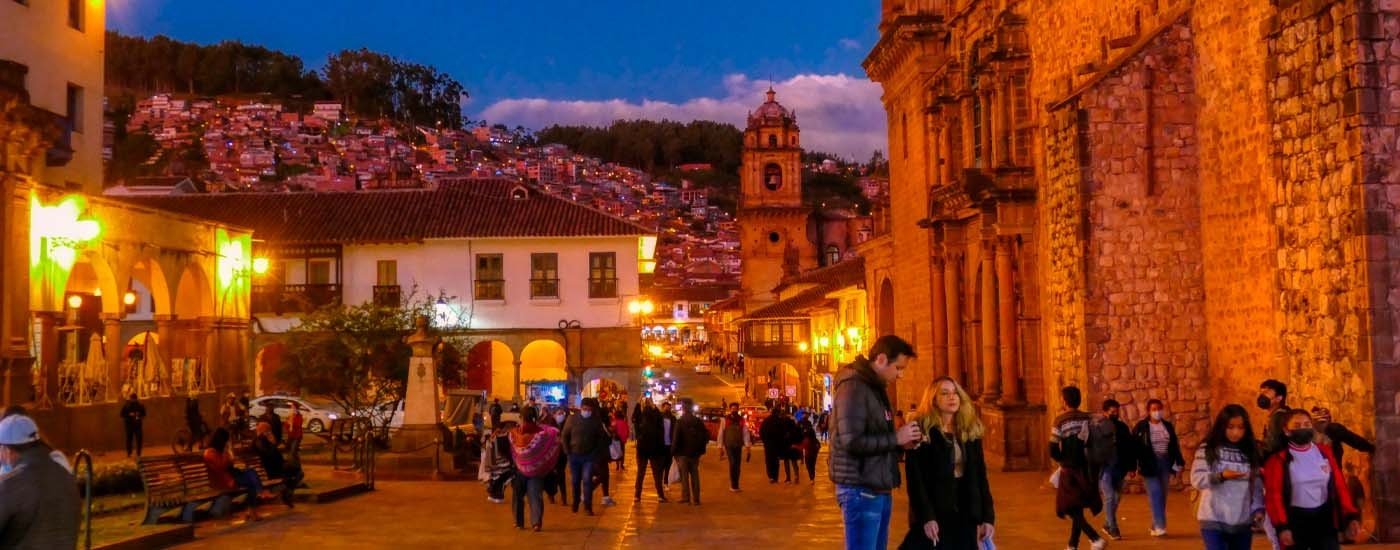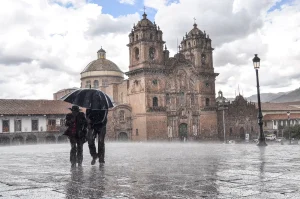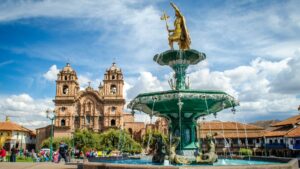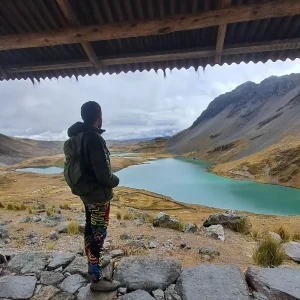Cusco, the Imperial city of the Inca, has some of the most fascinating history and cultural heritage of any city in the world. Every street you walk down there’s a story to be shared. The Inca believed this area to be the center of the world. Many people who visit claim feeling a sort of unique energy. There’s a lot of Cusco information out there. Join us as we explore the unique city of Cusco.
Climate of Cusco
Cusco has a subtropical highland climate and resides in the Andean mountains of Peru, located in the region of Cusco. Although the city is high in the mountains, the climate is relatively mild when compared to other high elevation cities. Depending on where you come from, the weather can feel slightly cold during the night, or mildly hot during the day, especially when in direct sun. Remember you’re going to be at high elevation where the sun is much stronger.
The region is dominated by two main seasons, the rainy season and the dry season. Unlike most places, instead of summer and winter being the main seasons. The amount of precipitation is what shapes the seasons.
***PLEASE NOTE: Cusco is at high elevation, because of this the sun is much stronger than at sea level. It’s very easy to get sunburn, always have sunscreen especially in the dry season!
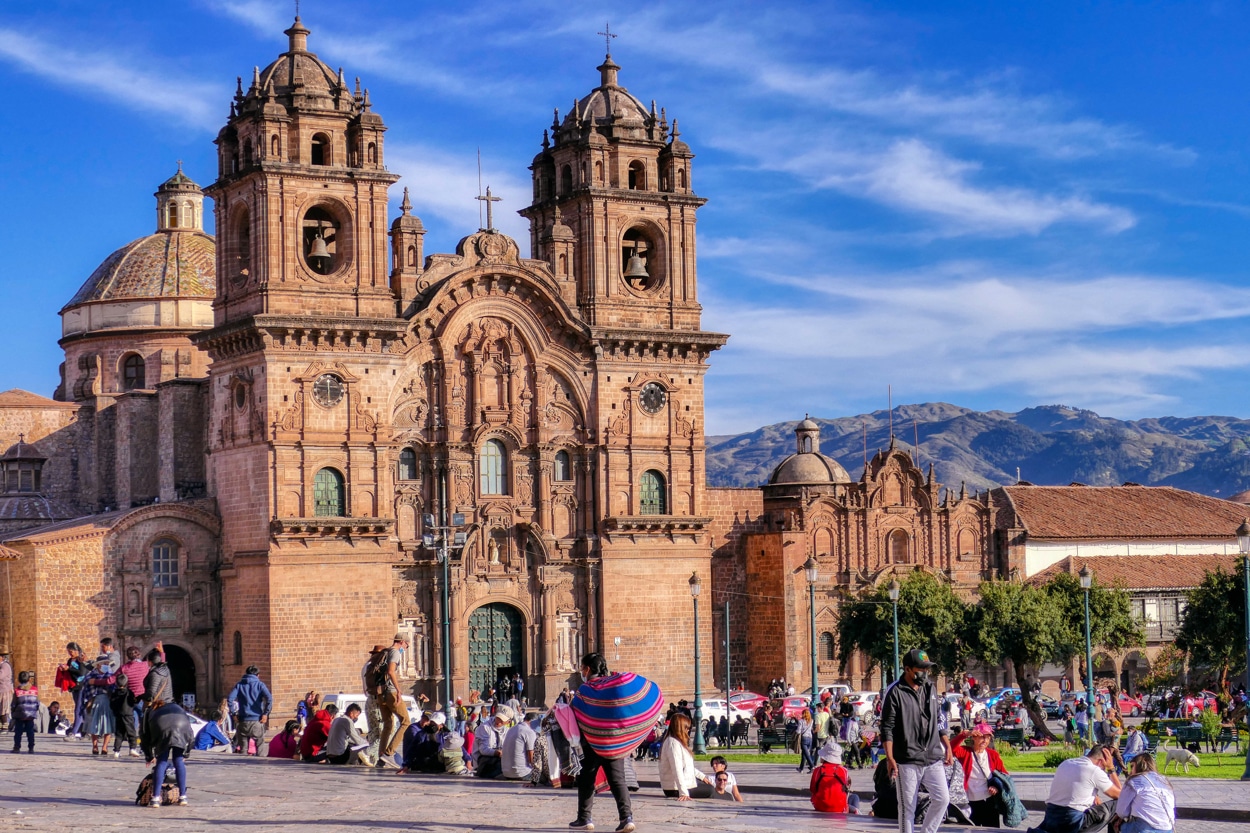
Rainy Season
The rainy season takes place in the Peruvian summer. Starting around the beginning of November and continuing until the end of April. Although there are heavier rains during this time of year the temperatures are generally milder 16°C (60°F) in the day and 8°C (46°F) at night. Encounter the most rains from December until the end of March. February is the rainiest month of the year. The Inca Trail is closed in February for maintenance and repair.
Dry Season
The dry season, being in the Peruvian winter, starts around the beginning of May and goes until the end of October. During this time of year the temperatures can be a bit more extreme. The average temperatures range from 4°C (25°F) at night to 18°C (65°F) during the day. The nights can feel cold especially if you are not used to colder climates. The days can feel mild to hot particularly if you find yourself in the sun for more than a couple hours. Remember to apply sunscreen frequently if you visit during the dry season.

When is the Best Time to Visit Cusco?
Most people agree the best time to visit the region is in the dry season. It all depends on personal preference but, generally speaking clear sunny skies are more desirable than overcast rainy days. Take into account that the rainy season has a lot less tourists. During the months of December and January there are virtually no foreign tourists when compared to the busy months of the dry season. If you want to have a balance of good weather and fewer crowds consider visiting in between the rainy and dry seasons.
- The dry season will offer the clearest views of Machu Picchu and the least rainy days
- The rainy season will have sun most days but rains nearly every day
***PLEASE NOTE: If you want a balance between good weather and smaller crowds consider going in between seasons (March to April and September to October)
Geography of Cusco
Cusco is the capital of the province of Cusco and has a population of 430,000. Located in the Huatanay river valley, the Vicabamaba mountain range runs north of the city. The geography of Cusco is dominated by the towering Andean Mountains. Nearly every aspect of life in Cusco is affected by the mountains and their high elevation. The tallest Mountain is Salkantay, jutting an astonishing 6,271 meters or 20,574 feet into the sky the mountain is truly a sight to behold. Being a mountain city, Cusco is considered to be at high elevation 3,399 meters or 11,152 feet above sea level. The high elevation is one of the defining characteristics of the region. Only certain types of crops can grow at these elevations and altitude sickness is a real difficulty.
History of Cusco
The History of Cusco and the surrounding region is filled with Andean myth and oral history. Many different Andean peoples and tribes have lived in the area with the Kilke society being the oldest recorded, dating back to 900 AD. After hundreds of years of indigenous interactions, the City State of Cusco was finally founded around 1200 AD.
The city of Cusco is said to have been founded by the first Incan King Manco Capac. Manco Capac is shrouded in mystery and speculation and his existence has still yet to be confirmed. There are three main legends surrounding the Inca figure. All these are passed down by Incan oral history then recorded by the Spanish conquistadors.
Expansion of Cusco
The Cusco city-state remained a small civilization retaining its boarders but not expanding much until around 1438 AD. According to the Inca oral History, Pachacutec, the most important and famous Inca Emperor, was the one responsible for the city’s growth. However archeological discoveries suggest the city was expanding naturally before Pachacutec’s rule. Whatever the case, after the invasion of the Chankas, and their ultimate defeat by Pachacutec and the Cusco defenders, the city of Cusco went through a transformation.
Pachacutec ordered the reorganization of the city diverting the two rivers Tullumayo and Saphi. Effectively changing Cusco’s shape to resemble a Puma. One of the three most sacred animals in Incan culture. Cusco evolved from a simple city state into the empire of Tawantinsuys (Incan Empire). The city was upgraded to meet the needs of an imperial society and its borders continued to expand. Pachacutec would later conquer the surrounding tribes through force or peaceful assimilation. It eventually became the largest empire in the history of the Americas.
Spanish Arrival
A serious of tragic events occurred just before the Spanish arrived that crippled the empire. This reducing the population significantly and weakening its military strength. The Incan Emperor Huayna Capac and his eldest son and successor, Ninan Cuyochi, both died due to illness while campaigning in modern day Columbia. It’s widely thought that the illness was some form of disease brought by Spanish conquistadors, perhaps either smallpox or infuenza.
After the Inca emperor and his successor died the empire was split into two sections. The northern with Quito as its capital ruled by Atahualpa, and the southern with Cusco as its capital ruled by Huáscar. The Inca throne was eventually claimed by the two decedents of Ninan Cuyochi, and a deadly civil war ensued that lasted from 1529 until 1531. The war weakened the empires military and moved its forces away from the Capital of Cusco. Atahualpa eventually won the war and imprisoned his half-brother Huáscar.
On the return trip to Cusco Atahualpa encountered the Spanish Conquistador Francisco Pizzaro. When the Spanish arrived in 1531, they found an empire that had been decimated by an unending epidemic and a bloody civil war. Pizzaro launched a surprise attack and was able to capture the Incan Emperor Atahualpa. The following ransoming and execution of Atahualpa marked the beginning of the end for the Inca Empire. In the years following the Spanish took control of Cusco in 1533 and again the city was reshaped. When walking the streets of Cusco you can see many of the Spanish structures are built on the stones of the old Inca city of Cusco.
Places to explore in Cusco
There are tons of places to explore in the historic city of Cusco. In fact, the city is so packed with historical sites that you could easily pass some by and if you don’t have a lot of time you may have to pick and choose some over others.
***PRO TIP: For an easier and more informative experience consider taking a city tour or Sacred Valley tour with one of the local tour operators.

Plaza de Armas
Called Huacaypata in Incan times, the square served as the main meeting ground for the empires most important ceremonies. Today Plaza de Armas is a prime example of the cities mixed architecture. The square is lined with bars restaurants and shops all adding to the vibrant hustle and bustle of the city center.
Cusco Cathedral
The churches of Cusco are probabñy the most obvious remenants of the city’s colonial past. Cuso Cathedral is the biggest and most impressive of them all. Located in Plaza de Armas, construction of the cathedral started in 1560 and took 100 years to complete. Stones were taken from the nearby Incan fortress of Saqsayhuaman to make the cathedral.
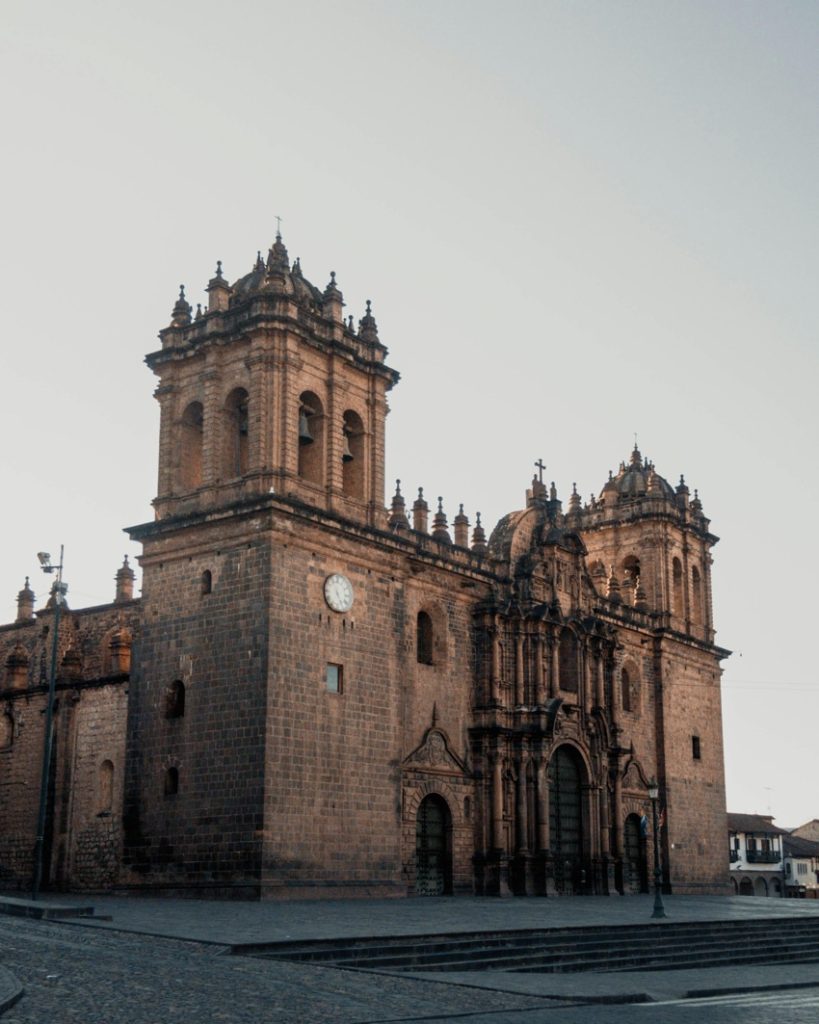
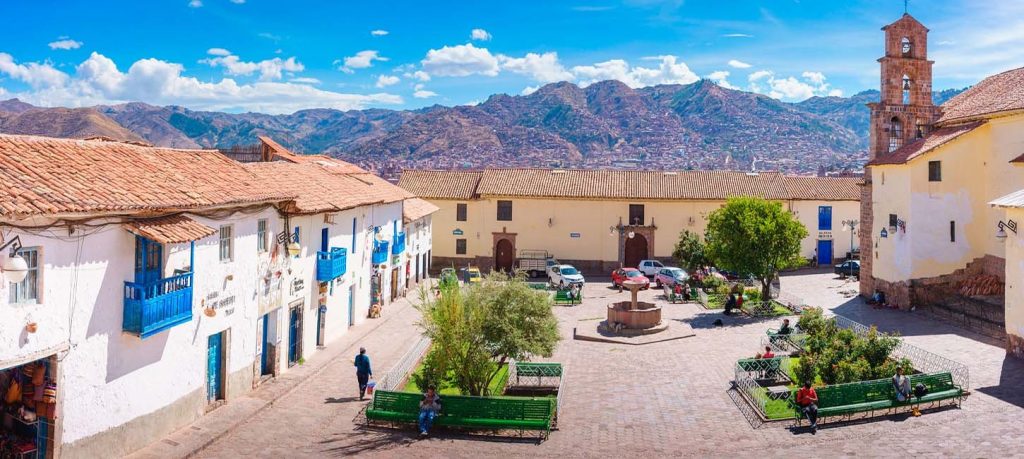
San Blas
The neighborhood of San Blas is the bohemian center of the city. Just a 10-minute walk from the main square, San Blas has been the center of art since the time of the Inca. A must see for any tourist, window shop at the many different art galleries. Or take a stroll down the picturesque streets and admire the beautiful contrast of the blue and white buildings with the red tilled rooftops.
Coricancha
Coricanhca was the most important and sacred temple in the Inca Empire. Coricancha is a Quechua word meaning “golden temple” and was dedicated to the sun god Inti. Based off the recordings of Spanish conquistadors it’s said Coricancha was the most lavish and wealthy temple in all of South America having rooms full of gold, silver and jewels. Even the walls of Coricancha were once covered in gold and silver plating. However, Atahualpa’s capture and ransom it’s said all the gold and silver and jewels were stripped leaving the Inca stone walls exposed and the temple empty. After the Spanish occupation and takeover of Cusco, Santo Domingo Church was built on top of Coricancha. Currently there is a museum in Coricancha underneath Santo Domingo church, with Inca Artifacts and some human remains on display.

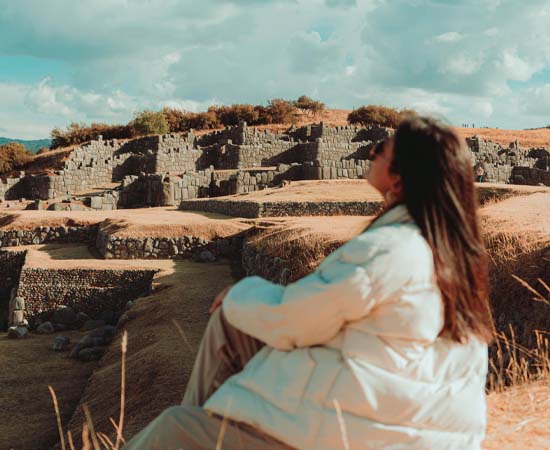
Saqsayhuaman
The largest fortress in the Inca Empire, Sacsayhuaman was heavily fortified with Incan military equipment inside. Making up the head portion of the Cusco Puma. Sacsayhuaman is one of the most impressive archeological sites in the Cusco region. Nearly all of the stones that could be moved were used in the construction of the new Spanish city of Cusco. The stones that remain were far too massive for the Spanish to move. When you’re there in person it’s hard to believe that the site is a fraction of what it once was.
Tambomachay
Thought to be a type of Incan guest house or spa for the Incan elite. Tambomachay is said to have been one of the nine ceque (the ritual routes leading out from Cusco). Known as the “Incan baths” the site is made up of four large terraces with a natural spring located at the top. The spring was channeled down the terraces and into a large stone reservoir showcasing the master knowledge of Incan hydraulics and stonework.
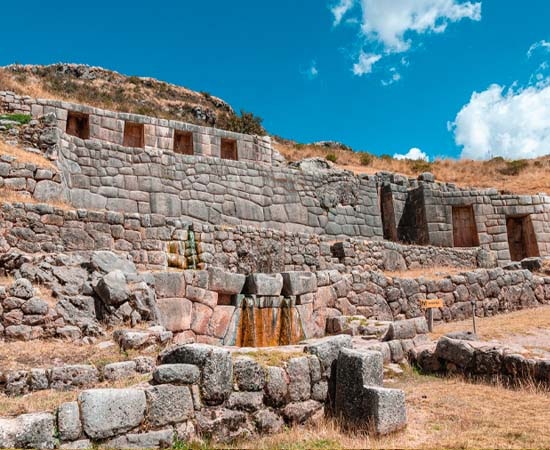

Qenqo
One of the most important holy sites in all of the Incan Empire Qenqo is said to have been the location of many sacrifices and Mummifications. A Huaca (holy site of worship) carved out of natural occurring rock this site has many carved stones on the surface. A tunnel leads down into a decently sized cave that has been carved and shaped to better accommodate rituals and ceremonies.
Mercado San Pedro
The main market in the city of Cusco, Mercado San Pedro has a huge variety of goods. From produce and meat products to traditional Andean clothing you may be overwhelmed at first by all the hustle and bustle. Mercado San Pedro is a must see for anyone visiting Cusco make sure not to miss this amazing example of Andean Culture.
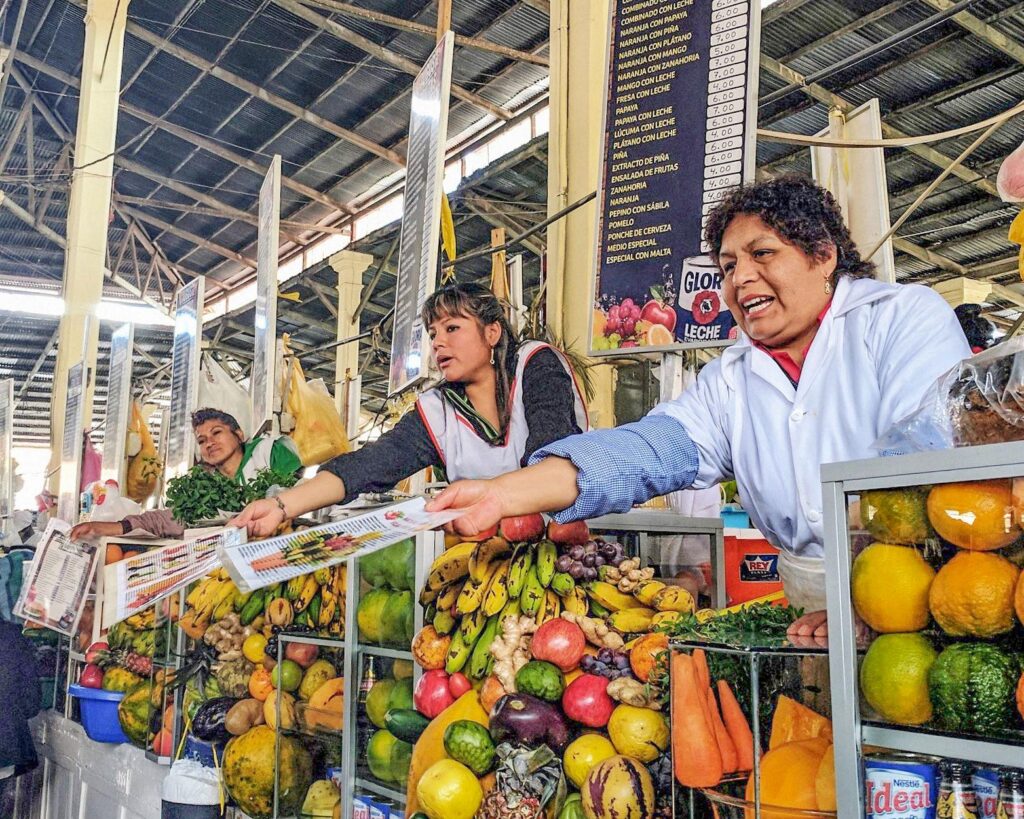
***PRO TIP: The boleto turistico will grant you access to many of the sites of interest in and around Cusco.
Packing List
- Bring layers: the temperature can change drastically from day to night
- Camera: unless your phone has a good enough camera
- Reusable water: bottle drink lots of water the climate can be dryer than you’re used to
- Sunscreen: keep in mind you’ll be at high altitude where the sun is strong
- Rain jacket: especially in the rainy season
- Hat and sunglasses: especially in the dry season
- Altitude sickness pills or coca leaves: you can purchase the leaves at Mercado San Blas and the pills at any local pharmacy
- Day bag: for drips trips in and around the city
Altitude Sickness
The altitude affects everyone differently I know some people are completely bed ridden for a couple of days. Others on the other hand, have no symptoms at all but, typically have a minor headache or a slightly upset stomach. When you arrive to Cusco drink strong coca tea made from coca leaves. Drink this tea nearly all day for the first week or two. Additionally try and eat only light meals the first day at least this will help your stomach as it gets used to the altitude. Generally you should be fine after a few days just remember to drink lot of water and take it easy.

